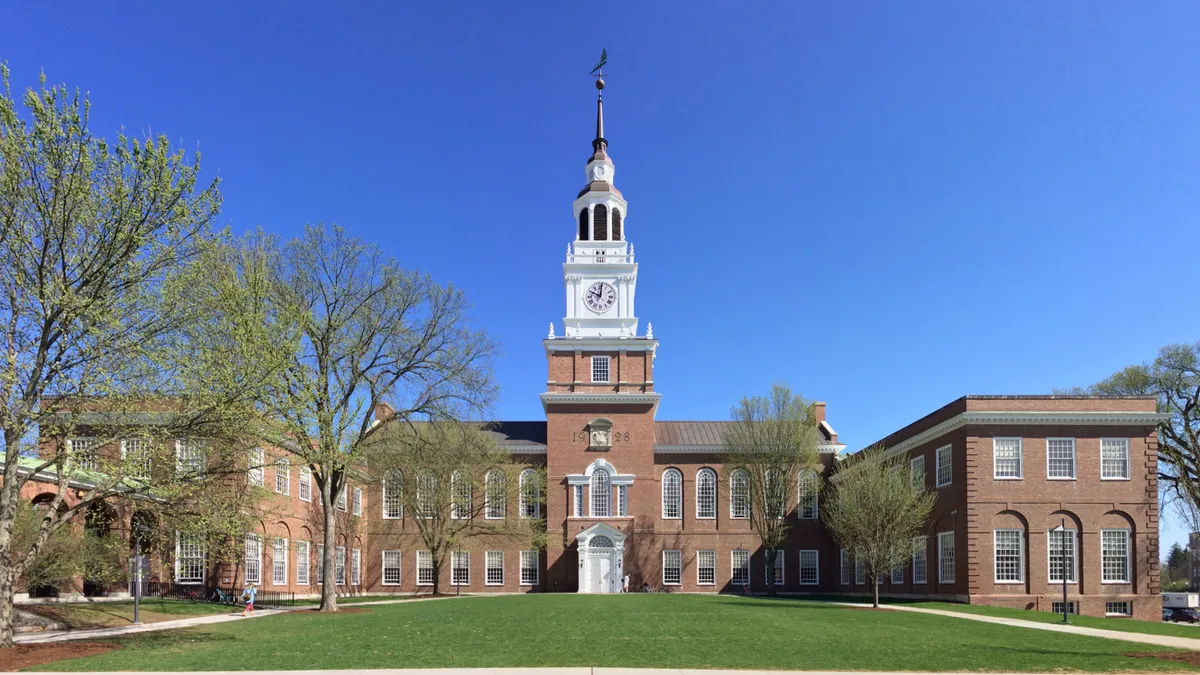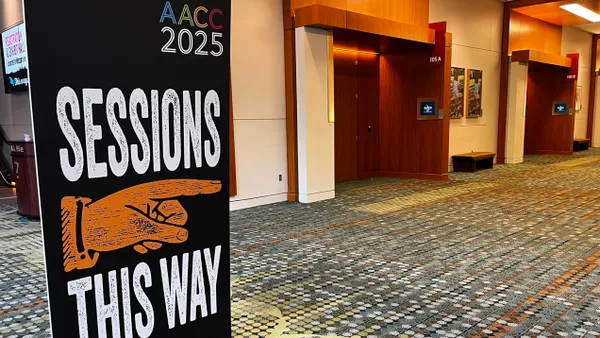Dive Brief:
- Dartmouth College is planning a $500 million “once-in-a-generation” investment in undergraduate student housing projects through 2029 aimed at providing more on-campus residences for the vast majority of students, the institution has announced.
- The Ivy League institution also announced a $30 million donation to support student housing, the largest in Dartmouth’s history for housing. With that, the college has launched a fundraising campaign with a $165 million target to help fund construction of new undergraduate residences, Dartmouth said.
- The investment will modernize and upgrade existing housing on its campus in Hanover, New Hampshire, as well to make good on Dartmouth President Sian Leah Beilock’s pledge to add 1,000 beds for students, faculty and staff over the next decade.
Dive Insight:
Dartmouth, with its $1.4 billion in annual revenue and $11.7 billion in assets, is pouring resources into modernizing its campus while smaller, less wealthy colleges struggle to balance their budgets and keep up with their maintenance backlogs.
The push to build new student housing would mean the first new residences in more than 20 years at Dartmouth. Currently 85% of undergraduates live on campus. The college is targeting more than 90%, it said.
In August, Dartmouth broke ground on an apartment-style residence hall for undergraduates, which will now be named “Russo Hall” after Thomas and Gina Russo, the alumni philanthropists behind the newly announced $30 million housing donation.
The first of several planned apartment-style residences near Dartmouth’s central campus, Russo Hall is set to open in fall 2026 and will house up to 285 juniors and seniors, according to the college.
Dartmouth has also recently renovated three residence halls to include more beds, gender-neutral bathrooms, air conditioning and hot-water heating.
That last feature — the hot-water heating — is tied to Dartmouth’s sustainability push. Earlier this year, the institution announced a separate $500 million investment to transition away from steam-based heating to hot-water infrastructure.
The switch is expected to yield a 20% gain in energy efficiency by allowing the campus to use multiple and more sustainable heating methods, Josh Keniston, senior vice president for capital planning and campus operations at Dartmouth, told Higher Ed Dive in the spring.
Meanwhile, many other institutions are struggling to invest in their infrastructure amid rising higher education costs and constrained tuition revenue in a competitive field.
For colleges covered by Moody’s Ratings, the capital needs for facilities amount to an estimated $750 billion to $950 billion over the next decade, the ratings agency said in an August report.
That backlog of facilities investment represents a huge “hidden liability” in the view of analysts, who said that failing to invest could weaken colleges' competitive ability to recruit students and faculty.
In a separate report, Moody’s analysts also pointed to the need for colleges and universities to build more affordable housing for graduate students. Yet they also noted the challenges — among them inflated construction costs and high interest rates.
Analysts with the ratings agency estimated that, with supply constrained in the short term and student housing vacancy rates historically low, rents for students will grow 4.4% annually over the next three years.













